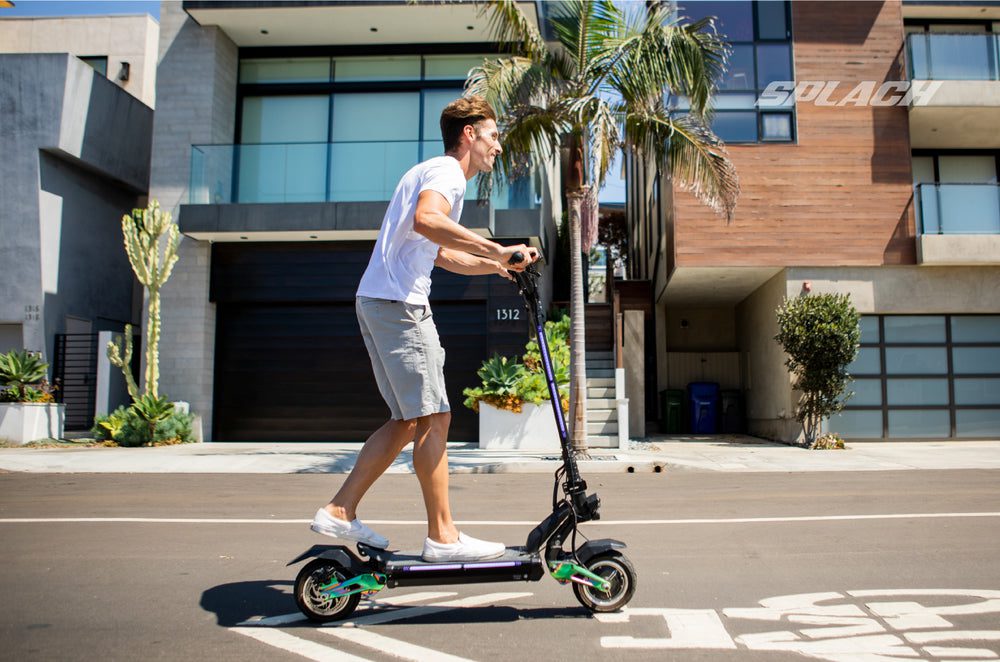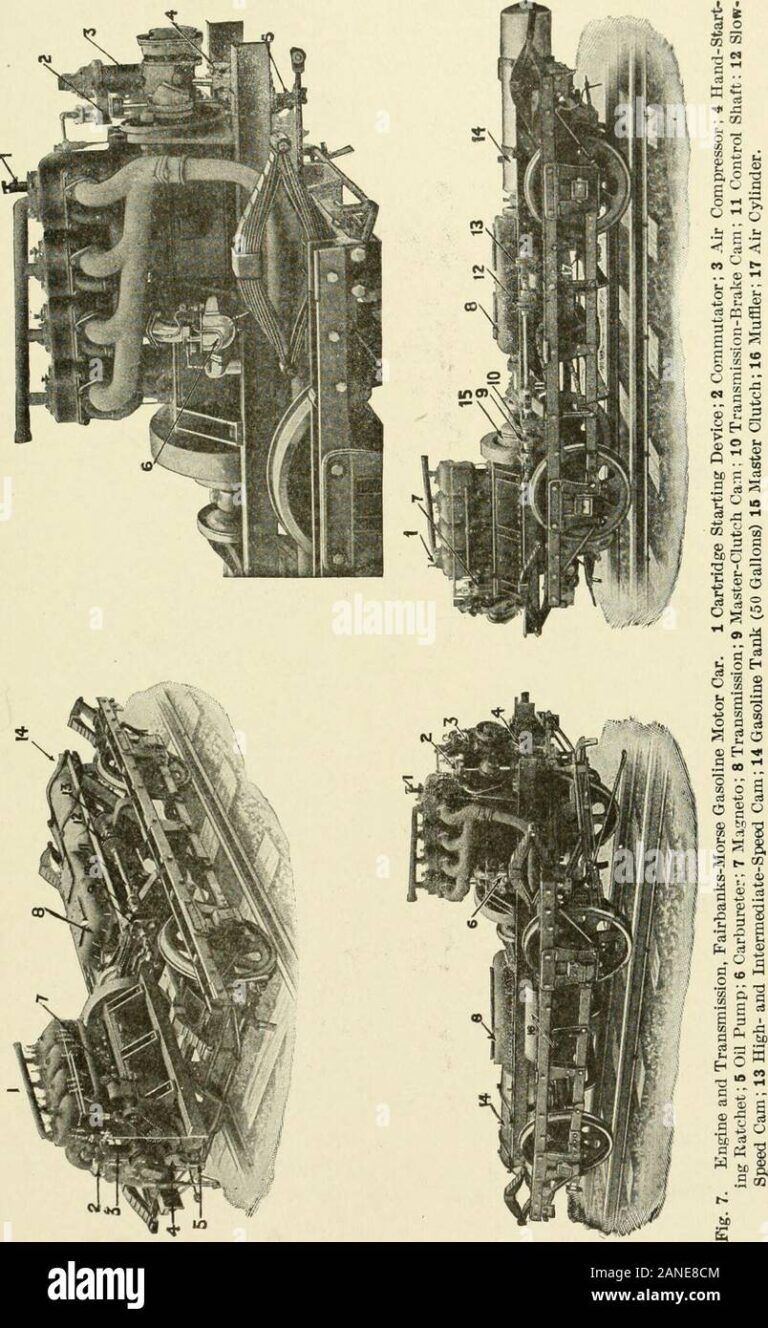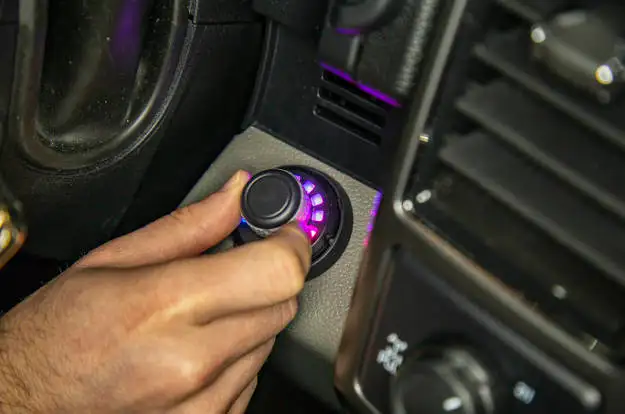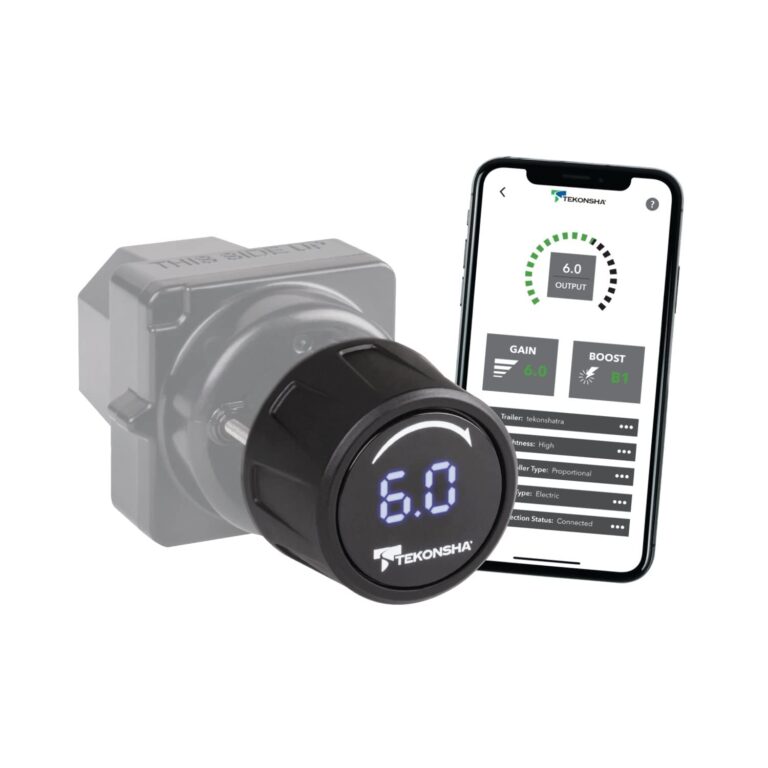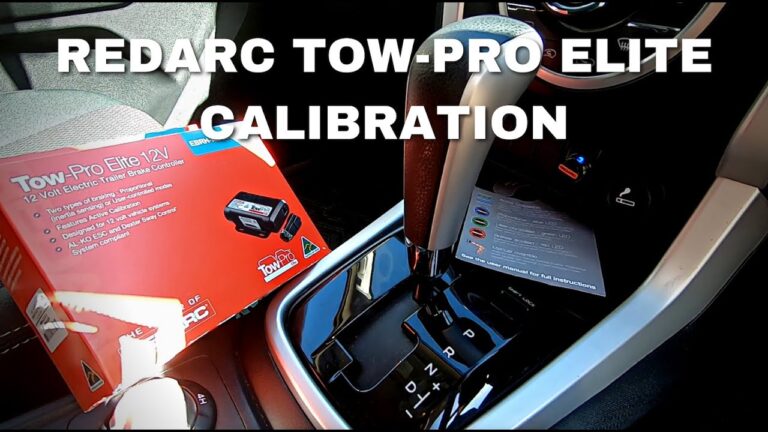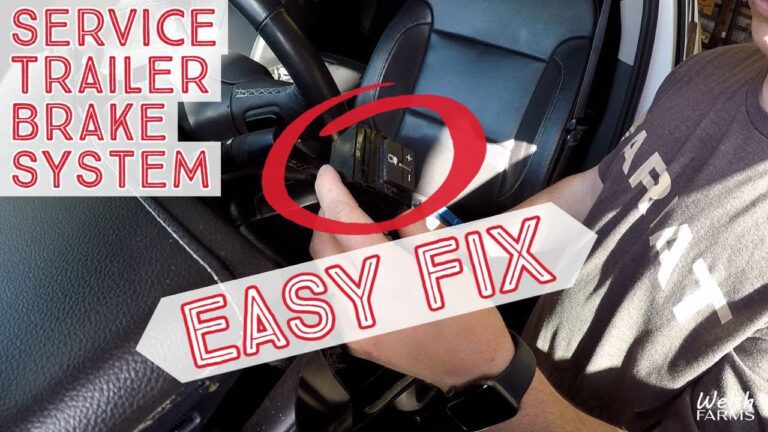Maximizing Safety: How to Set Your Trailer Brake Controller
To set your trailer brake controller, locate the manual control and adjust the gain according to your trailer’s weight. Now, let’s dive into the details.
A trailer brake controller is an essential device that helps the driver control the trailer’s braking. It activates the electric brake system on the trailer, which synchronizes the braking between the towing vehicle and the trailer. But, setting up a brake controller can be overwhelming for beginners.
However, with a little knowledge and practice, you can do it yourself without any professional help. The key to understanding how to set up a brake controller is to know the weight of the trailer and adjust the gain level accordingly. In this article, we’ll guide you through the process of setting up a trailer brake controller accurately and efficiently.
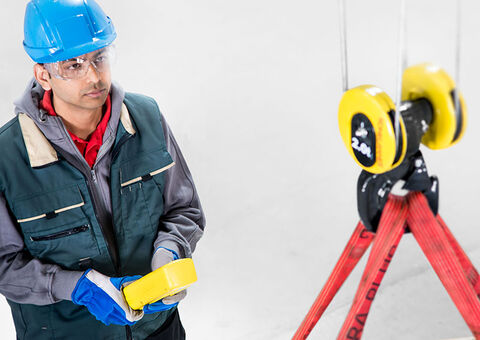
Credit: www.konecranes.com
Understanding Your Trailer Brake Controller
Setting up a trailer brake controller may seem daunting, especially if you’re a new driver. But understanding the basics of your trailer brake controller is an essential part of driving safely. So, let’s dive into it.
Different Types Of Trailer Brake Controllers
There are three primary types of trailer brake controllers:
- Time-delayed brake controllers: Stay activated for a predetermined amount of time, usually can be adjusted in seconds.
- Inertia-based brake controllers: Apply the brake proportional to the towing vehicle’s deceleration rate.
- Proportional brake controllers: Apply the brake proportionally to the towing vehicle brake pedal’s pressure.
Each type of trailer brake controller has a unique set of features that suit certain towing vehicles and driving styles. Carefully selecting the brake controller according to your vehicle and driving habits is crucial.
How To Determine Which Type Of Brake Controller You Have
If you’re unsure which type of brake controller you have, here are a few simple steps you can follow to find out:
- Check your owner’s manual to discover the type of brake controller.
- Look for the brand name and research which type of brake controller it is.
- Check the sticker on the back of the brake controller.
Purpose And Function Of A Trailer Brake Controller
Trailer brake controllers serve the primary function of providing braking assistance to the trailer being towed. Without a trailer brake controller, the added weight of the trailer can push the towing vehicle forward, causing dangerous driving conditions. Here’s how a trailer brake controller works:
- The tow vehicle supplies power to the brake controller.
- The brake controller sends an electrical signal to the trailer brakes to activate them.
- Trailer brake output is proportional to the brake controller output.
By enabling a trailer brake controller, you can easily stop your trailer and tow vehicle simultaneously without causing any accidents.
Understanding your trailer brake controller’s features and functionality is vital to ensure safe towing on the road. Remember to check regularly if your brake controller has adequate power and is functioning correctly. Finally, always make sure you have a verified and reputable brake controller and that you are using the correct type of brake controller.
Setting Your Trailer Brake Controller: Step By Step
Are you wondering how to set up your trailer brake controller? Look no further! In this guide, we will take a closer look at the step-by-step process to set up your trailer brake controller and get you on your way.
Preparing Your Vehicle And Trailer For Brake Controller Setup
Before setting up your brake controller, you need to ensure that your vehicle and trailer are properly prepared. Follow these steps to get started:
- Check for compatibility between your vehicle and the brake controller.
- Locate the brake controller connector in your vehicle.
- Conduct a brake control system diagnostic.
- Connect your brake controller to your vehicle.
- Test the brake controller on a flat surface.
Identifying The Correct Brake Controller Settings For Your Specific Trailer Type And Weight
Once you have prepared your vehicle and trailer for brake controller setup, you need to identify the correct brake controller settings for your specific trailer type and weight. Follow these simple steps:
- Determine the weight of your trailer.
- Identify the type of trailer you are towing such as enclosed, flatbed or horse trailer.
- Cross-reference the weight and trailer type with the manufacturer’s settings for your brake controller.
- Input the settings into your brake controller.
Adjusting The Brake Controller For Optimal Stopping Power
After identifying the correct brake controller settings, it’s time to fine-tune and adjust the brake controller for optimal stopping power. Follow these steps:
- Locate the manual knob on the brake controller.
- Adjust the manual knob to see what lever position works best for your trailer.
- Test the brake controller again on a flat surface.
- Make any necessary changes to the manual knob and retest until the optimal stopping power is achieved.
Troubleshooting Common Issues Encountered When Setting Up A Trailer Brake Controller
When setting up a trailer brake controller, there can be common issues that arise. Here are some troubleshooting tips to help you avoid and address these issues:
- Check all connections to make sure they are securely connected.
- Verify that your brake controller settings are correct.
- Monitor the voltage, and ensure it does not exceed the maximum.
- If you’re still having issues, consult a professional or your brake controller’s user manual.
Follow these steps for a safe, smooth towing experience. Happy travels!
Tips For Maintaining Your Trailer Brake Controller
Importance Of Regular Brake Controller Maintenance
Maintaining your trailer brake controller is crucial for ensuring the safety of your towing journey. Regular maintenance will help prevent issues before they occur, reducing the risk of accidents and breakdowns. Here are some reasons why regular brake controller maintenance is important:
- It ensures that your brake controller is working correctly and efficiently
- It extends the lifespan of your brake controller
- It can identify and address any potential brake controller problems
- It helps maintain the overall safety of your towing experience
Signs That Your Brake Controller May Need Maintenance
Just like any other equipment, your trailer brake controller will show signs of wear and tear over time. It’s essential to recognize these signs and take appropriate action immediately to avoid any mishap on the road. Here are some common signs that your brake controller may need maintenance:
- Brake controller lights not turning on properly
- Delay in the brake activation
- Brake controller not working at all
- Uneven braking
- Problems with the overall performance of your brake controller
- Unusual noises while braking
How To Perform Basic Maintenance Tasks On Your Brake Controller
Now that you know why maintaining your brake controller is essential and what signs to look out for let’s discuss some simple steps to keep your brake controller in top condition. Basic maintenance tasks include:
- Cleaning your brake controller regularly with a damp cloth.
- Checking the connections of your brake controller and making sure they are tightly secured.
- Verifying that the brake controller is level by using a bubble level.
- Replacing the battery of the brake controller when necessary.
- Testing your brake controller before every trip to catch any problems before they become more severe.
Proper maintenance of your brake controller is crucial for a safe, secure, and enjoyable towing experience. Maintaining your brake controller according to the manufacturer’s recommended guidelines ensures that your brake controller performs at its best. Remember, always be cautious and attentive while towing, and don’t hesitate to seek help from a professional if you’re unsure about any aspect of brake controller maintenance.
Frequently Asked Questions About Trailer Brake Controllers
Trailer brake controllers are devices that help drivers to slow down or stop their trailer when it’s pulled behind a towing vehicle. They’re an essential component of any towing system, but many people have questions about how to set them up, adjust them, and use them correctly.
We answer some frequently asked questions about trailer brake controllers to help you make the most of your towing experience.
Common Questions And Concerns Related To Trailer Brake Controllers
- What is a trailer brake controller, and how does it work?
- How do i know if my trailer needs a brake controller?
- What types of brake controllers are available on the market?
- Can i install a trailer brake controller by myself, or do i need a professional to do it?
- How can i adjust the brake controller settings to suit my trailer and towing vehicle?
Expert Answers To Frequently Asked Questions
What is a trailer brake controller, and how does it work?
A trailer brake controller is an electronic device that activates the trailer’s brakes using electric signals. When you press the brake pedal in your towing vehicle, the controller sends an electric signal to the trailer brake system, which slows down or stops the trailer accordingly.
How do i know if my trailer needs a brake controller?
The general rule is that if your trailer weighs more than 1,500 pounds, it needs a brake controller. Check your trailer’s weight rating, and consult with your state’s regulations for exact requirements.
What Types Of Brake Controllers Are Available On The Market?
There are three main types of brake controllers: time-delayed controllers, proportional controllers, and hydraulic over electric controllers. Time-delayed controllers are the simplest and most affordable option, while proportional controllers are more advanced and provide smoother braking. Hydraulic over electric controllers are the best option for trailers with hydraulic brakes.
Can i install a trailer brake controller by myself, or do i need a professional to do it?
While it’s possible to install a brake controller by yourself, it’s advisable to have a professional handle the installation. A professional has the necessary tools and expertise to ensure that the installation is done safely and correctly.
How can i adjust the brake controller settings to suit my trailer and towing vehicle?
Every brake controller has some adjustment knobs or buttons, which can be used to adjust the braking power, gain, and sensitivity. The best way to adjust your controller is to follow the instructions from the manufacturer and do some experimentation to find the ideal settings for your trailer and towing vehicle.
Frequently Asked Questions On How Do I Set My Trailer Brake Controller
What Is A Trailer Brake Controller?
A trailer brake controller is a device installed in the cab of a tow vehicle that controls the electric brakes of a trailer. It allows the driver to adjust the amount of braking force applied to the trailer’s wheels.
Why Do I Need A Trailer Brake Controller?
A trailer brake controller is required by law in most states when towing a trailer with a weight of 1,500 pounds or more. Without a trailer brake controller, the trailer’s braking system may not function properly, making it difficult to control the vehicle.
How Do I Install A Trailer Brake Controller?
To install a trailer brake controller, first, locate the mounting position, usually under the dashboard of the tow vehicle. Connect the wiring to the correct terminals, then mount the controller and adjust the settings. Always make sure to follow the installation instructions carefully.
How Do I Adjust The Brake Controller Settings?
Adjusting the brake controller settings is a simple process. Begin by gradually increasing the brake force until the trailer wheels lock up, then back off slightly to find the right braking level. The ideal setting should allow the trailer to brake smoothly and quickly without locking up the wheels.
What If My Trailer Brake Controller Is Not Working Properly?
If your trailer brake controller is not working correctly, you should first check the wiring connections and make sure they are secure and undamaged. If the issue persists, consider seeking help from a mechanic or a professional trailer service technician.
Conclusion
As a responsible trailer owner, knowing how to set your brake controller is essential for your safety and the safety of others on the road. By following these simple steps and guidelines, you can ensure that your trailer’s braking system is in proper working order and can prevent accidents on the road.
Remember to calibrate your brake controller to match specific road conditions, such as weather and elevation, to ensure that your vehicle and trailer stop in a timely and safe manner. Take advantage of the available resources, such as your vehicle’s owner manual and online tutorials, to help you navigate the process.
In the end, taking the time to properly set your trailer’s brake controller is a crucial step in ensuring a safe and enjoyable trailer hauling experience.

